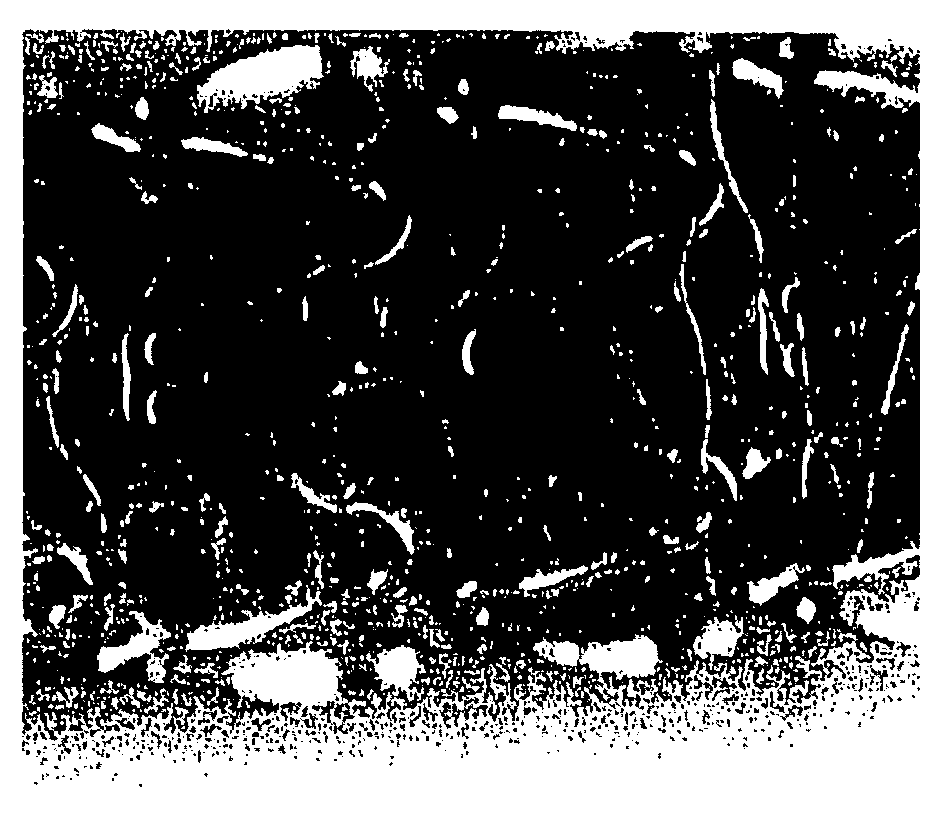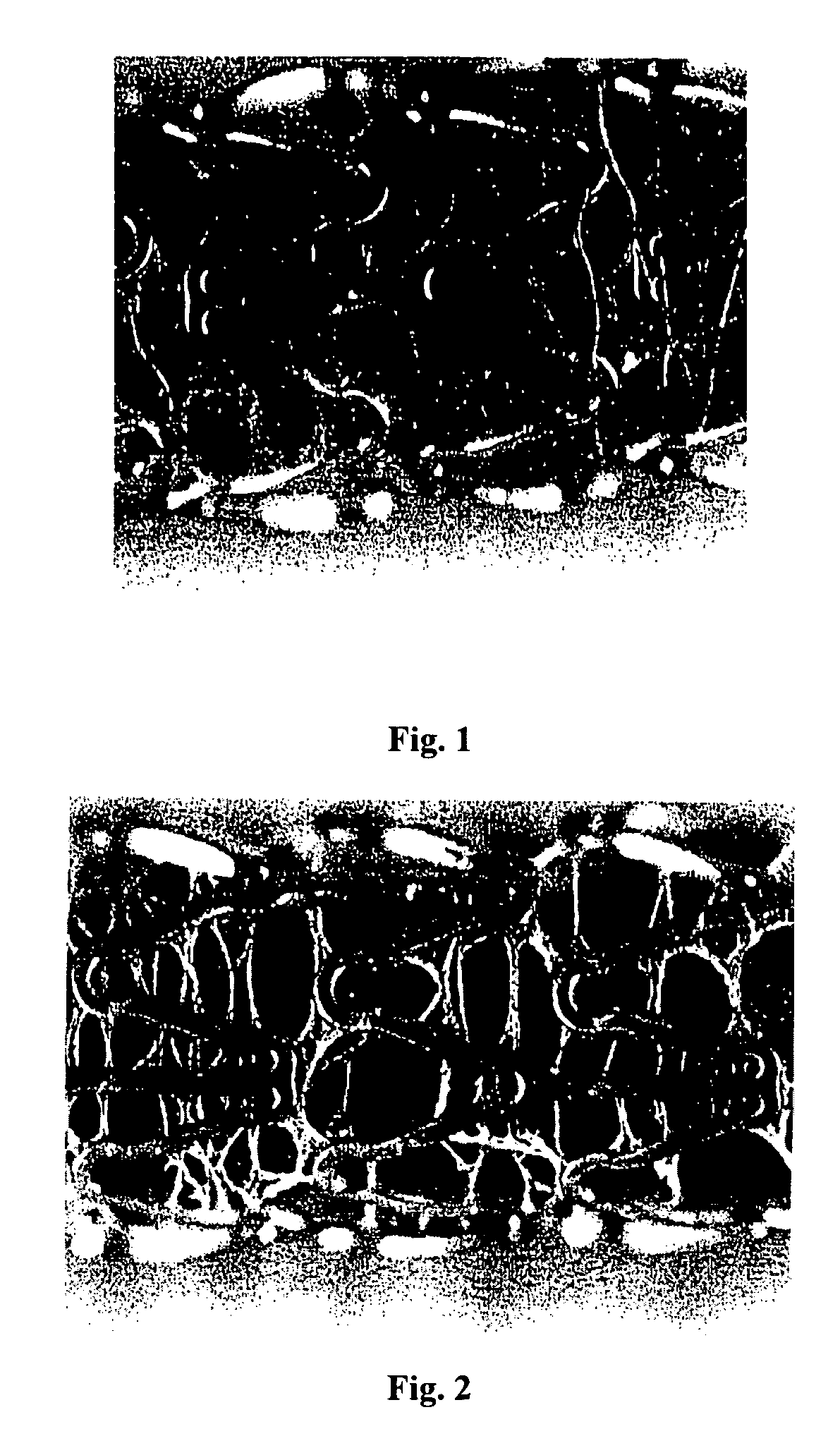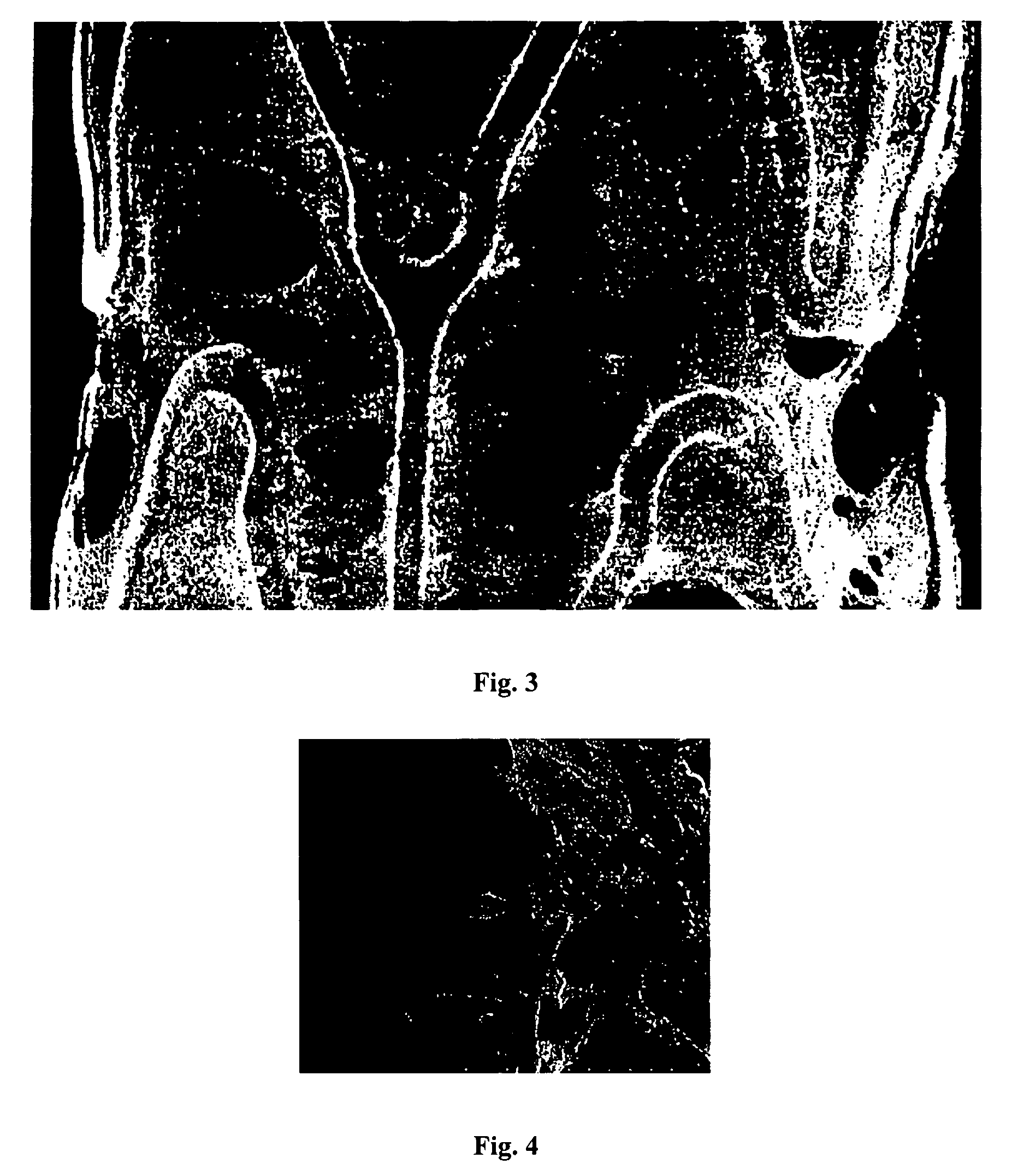Encapsulated covered stent
a covered stent and encapsulation technology, applied in the field of encapsulated covered stents, can solve the problems of thrombotic complications, large profile, restnosis, etc., and achieve the effect of reducing the risk of thrombotic complications
- Summary
- Abstract
- Description
- Claims
- Application Information
AI Technical Summary
Benefits of technology
Problems solved by technology
Method used
Image
Examples
example 1
[0102]A first composition was prepared by mixing the following components:[0103]about 2 mass % Kynar Flex 2800;[0104]dissolved in a mixture of acetone, dioxane, and Techspray at a weight ratio of 25 / 50 / 25
[0105]The first composition was applied onto the surface of a bare 13 mm TETRA stent (available from Guidant Corporation) by spraying and dried to form a cobwebbed stent coating. A spray coater was used, having a 0.014 round nozzle maintained at ambient temperature with a feed pressure of about 0.2 atm (about 3 psi) and an atomization pressure of about 15 psi (about 1.02 atm). The spray nozzle temperature was at ambient and a coating rate of 0.2 μg / mm sec of the wet coating was applied per pass. Between the passes, the coating was dried at using a flow of ambient temperature air for about 10 seconds. A total of 20 passes were applied. Following the last pass, the coating was baked at about 50° C. for about 2 hours. This yielded a cobwebbed, covered stent coating containing about 330...
example 2
[0106]A first composition was prepared by mixing the following components:[0107]about 2 mass % Solef 11010;[0108]dissolved in a mixture of acetone, dioxane, and Techspray at a weight ratio of 50 / 25 / 25
[0109]The first composition was applied onto the surface of a bare 13 mm TETRA stent (available from Guidant Corporation) by spraying and dried to form a cobwebbed stent coating. A spray coater was used, having a 0.014 round nozzle maintained at ambient temperature with a feed pressure of about 0.2 atm (about 3 psi) and an atomization pressure of about 15 psi (about 1.02 atm). The spray nozzle temperature was at ambient and a coating rate of 0.23 μg / mm sec of the wet coating was applied per pass. Between the passes, the coating was dried at using a flow of ambient temperature air for about 10 seconds. A total of 20 passes were applied. Following the last pass, the coating was baked at about 50° C. for about 2 hours. This yielded a cobwebbed, covered stent coating containing about 347 μg...
PUM
| Property | Measurement | Unit |
|---|---|---|
| diameter | aaaaa | aaaaa |
| average diameter | aaaaa | aaaaa |
| average diameter | aaaaa | aaaaa |
Abstract
Description
Claims
Application Information
 Login to View More
Login to View More - R&D
- Intellectual Property
- Life Sciences
- Materials
- Tech Scout
- Unparalleled Data Quality
- Higher Quality Content
- 60% Fewer Hallucinations
Browse by: Latest US Patents, China's latest patents, Technical Efficacy Thesaurus, Application Domain, Technology Topic, Popular Technical Reports.
© 2025 PatSnap. All rights reserved.Legal|Privacy policy|Modern Slavery Act Transparency Statement|Sitemap|About US| Contact US: help@patsnap.com



